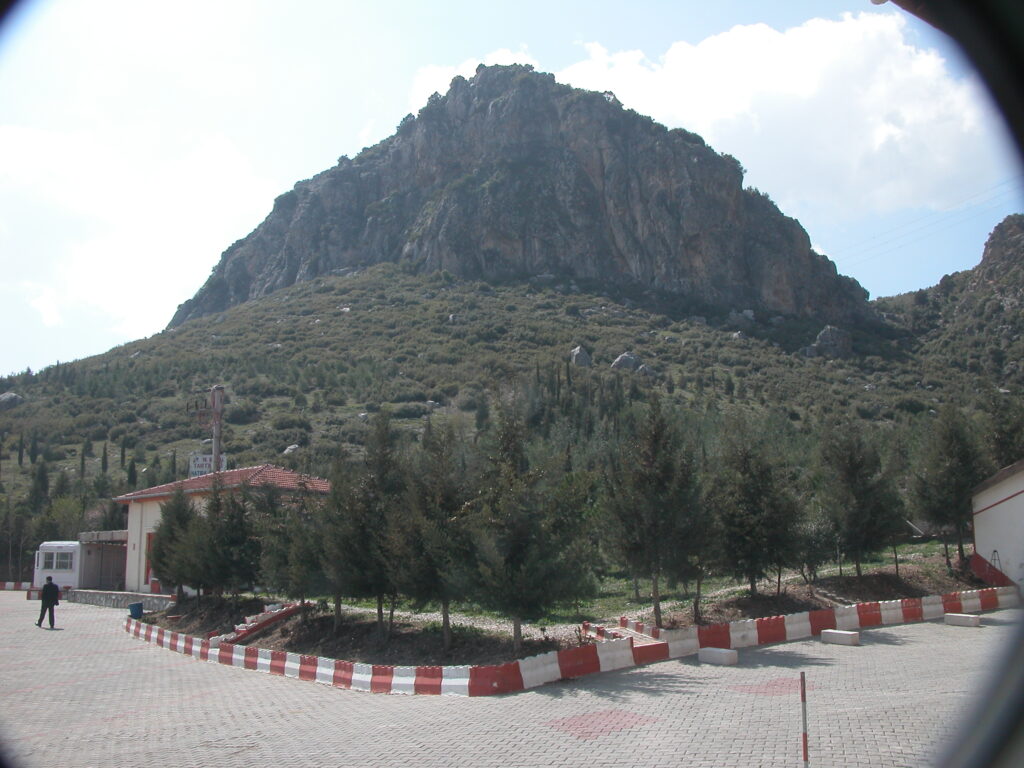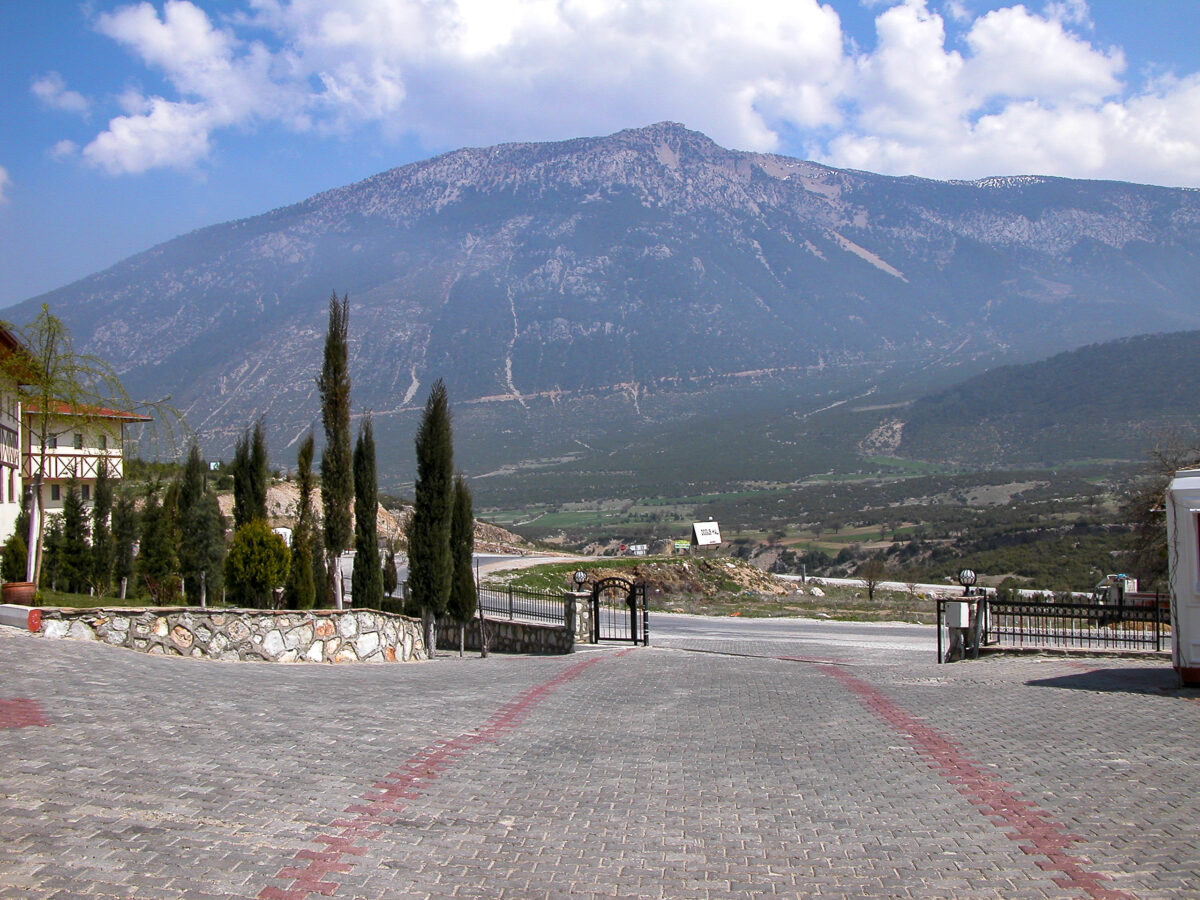From the resort town of Pamukkale it’s just a hop, skip and jump to Denizli, the metropolis of the Meander Valley, with a population of around a half million. Aside from being a major tourist center because of the proximity to Hierapolis and Pamukkale, among others, Denizli is the home of a substantial textile industry, as we were about to discover.
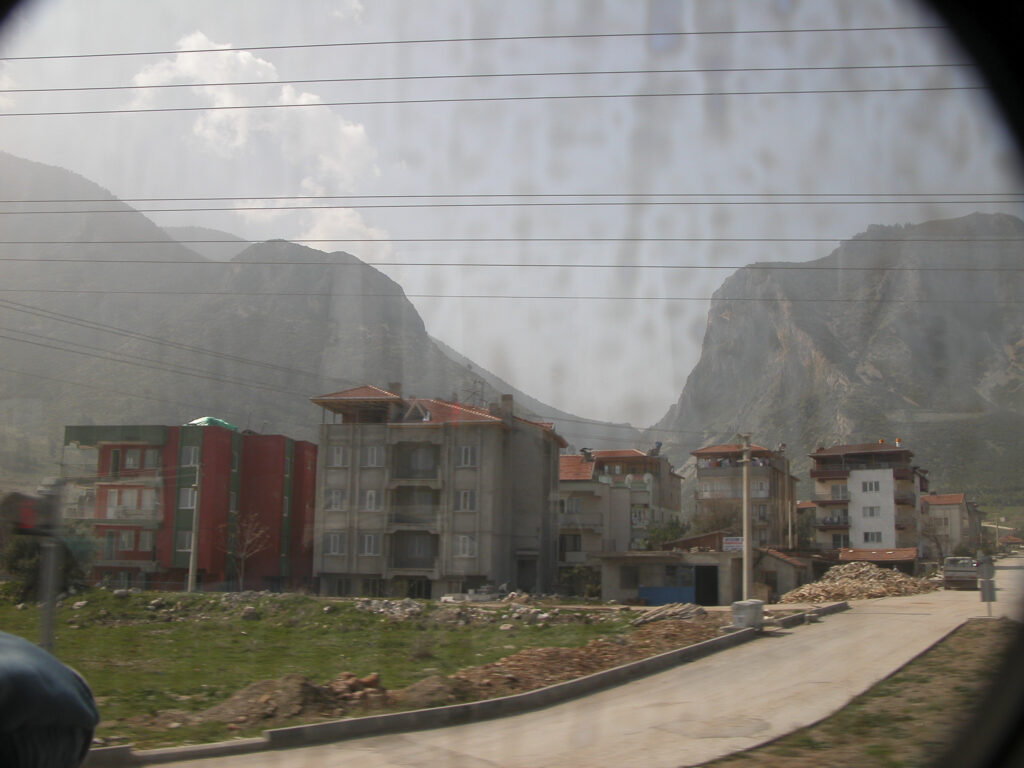
In Denizli we visited the Dogus Hali Carpet Factory. There we were taken through each step of the making of Turkish carpets, all the way from the spinning of the thread, through the dyeing, weaving, and finishing of the carpets; and, of course, the marketing and sale of the finished product was not neglected either.
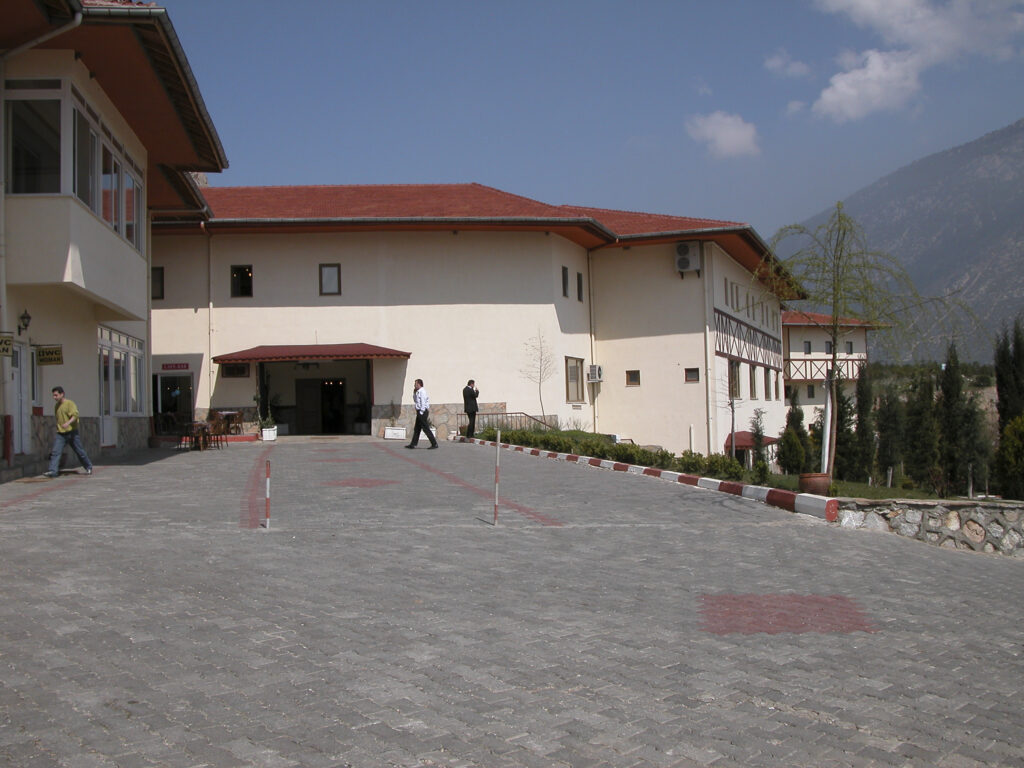
The first step in the making of a carpet is, of course, the spinning of the thread from the wool shorn from the sheep we had seen at Hierapolis earlier in the day.
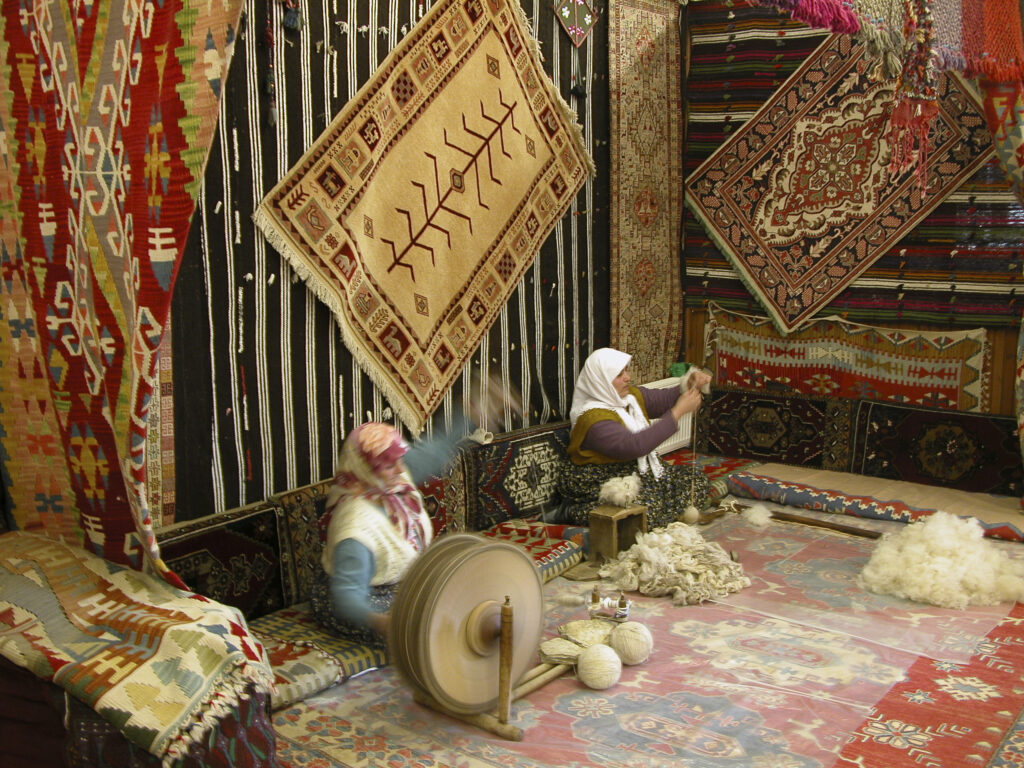
The thread was spun by local women, a highly skilled cadre who are the conservators of a vanishing art in this machine-dominated industry. We felt privileged to watch them at work.
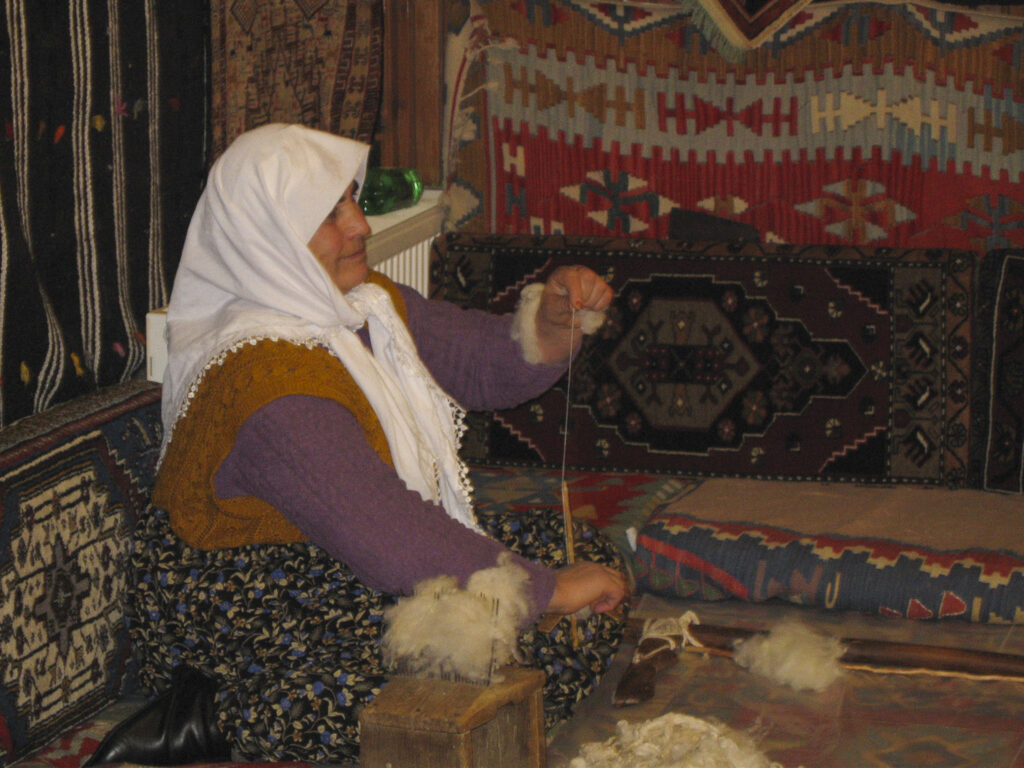
The spinners used some machines themselves, but of a more homespun (if I may use that term) genre. I’m not sure of the name or purpose of the contraption shown below, but the ultimate product, as seen behind the operator, was amazing.
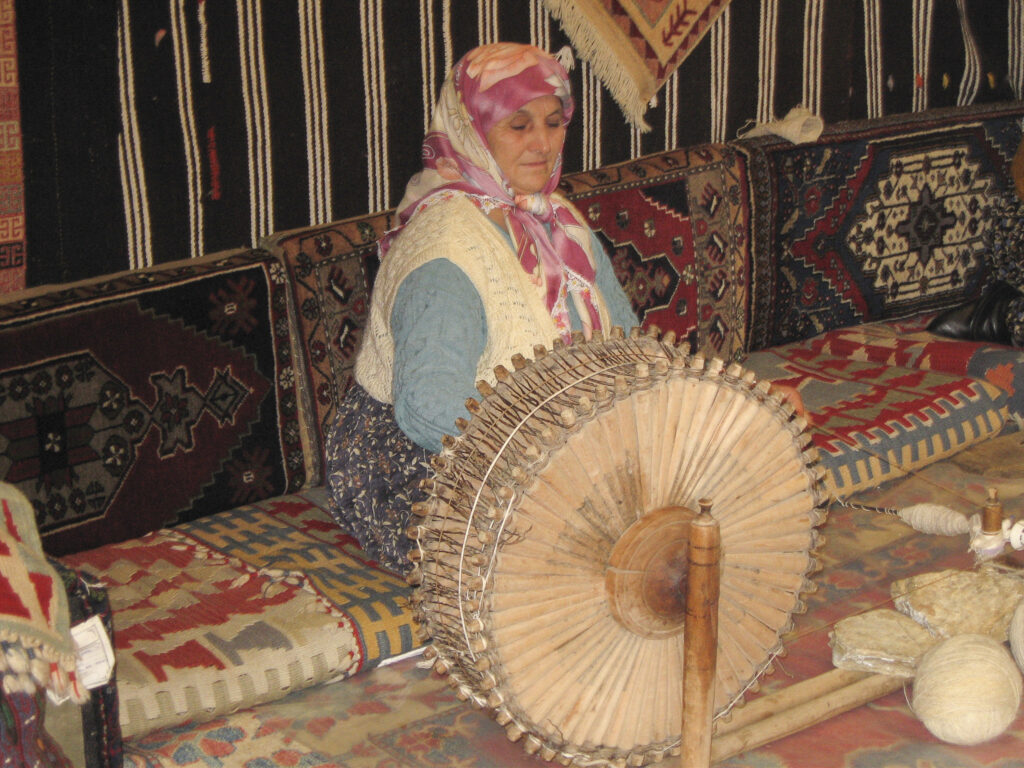
Next we visited the looms, where the women weave the carpets by hand.
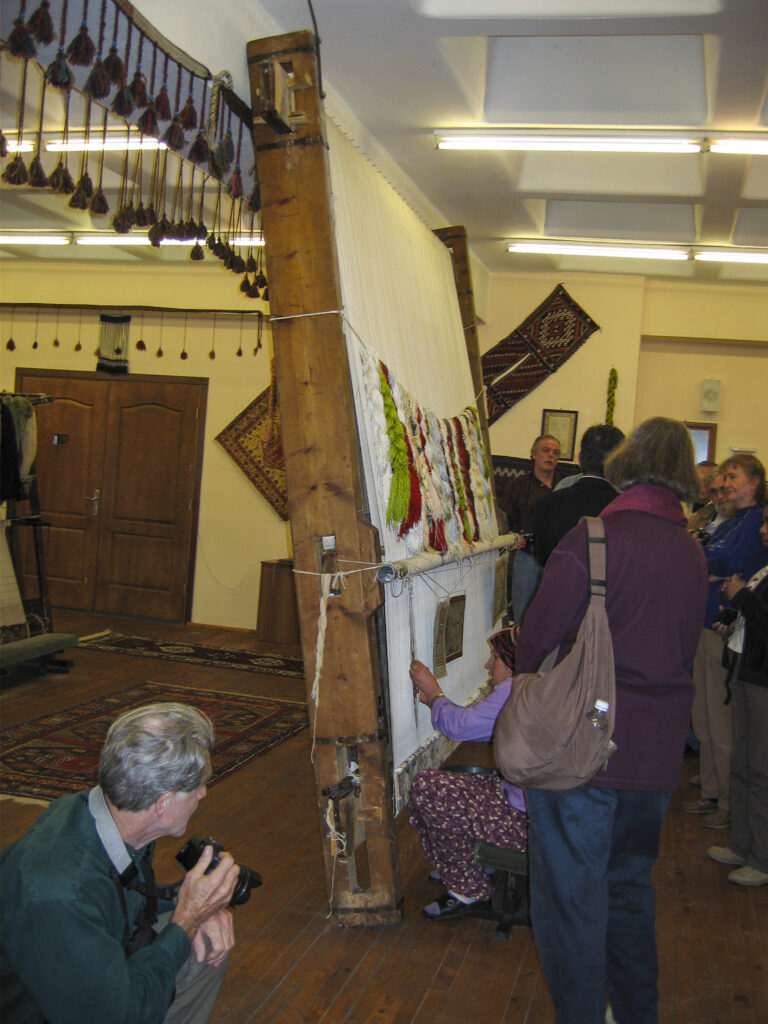
The art of weaving has always been a total mystery to me, and after watching it being done – admittedly rather briefly – at the Dogus Hali Carpet Factory, I can’t say that I have any better idea than before as to how it is done.
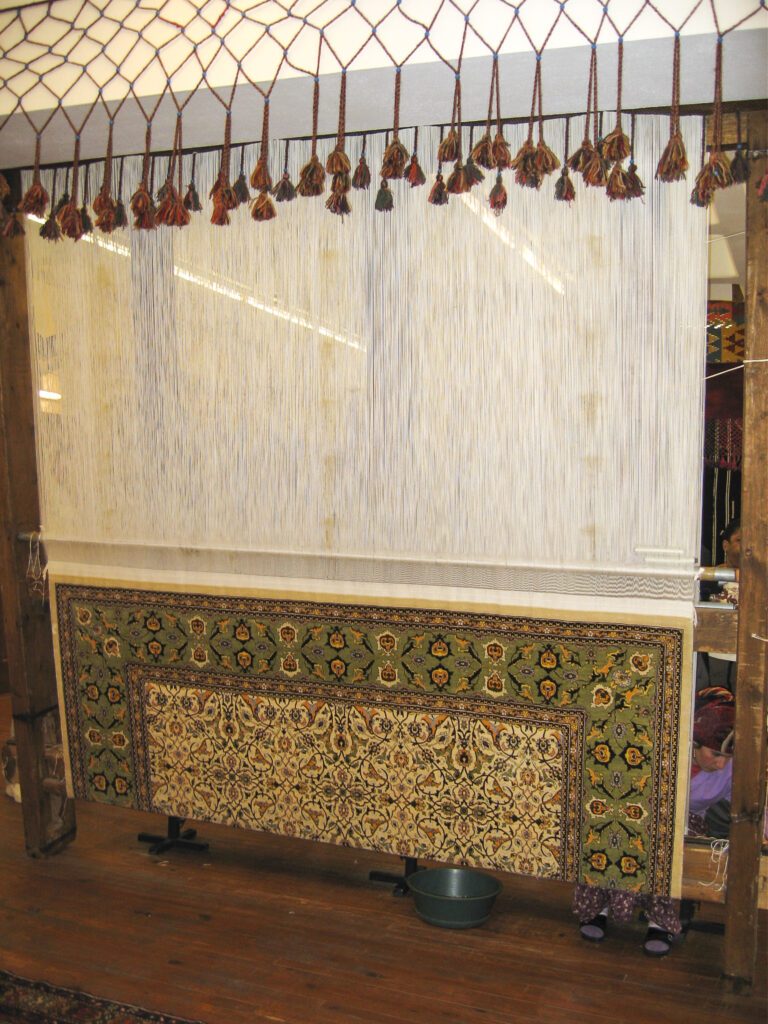
I am still utterly mystified as to how such intricately patterned creations emerge from a mere collection of assorted threads.
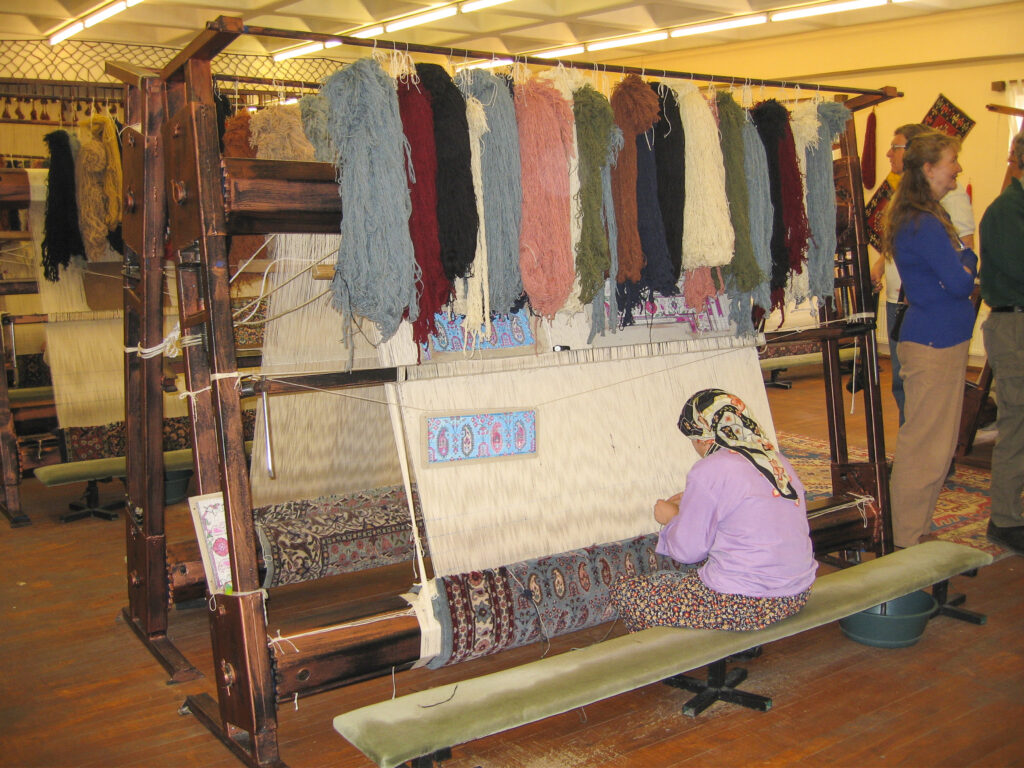
As one might expect, larger looms were used to make the larger rugs, and smaller looms to make the smaller rugs.
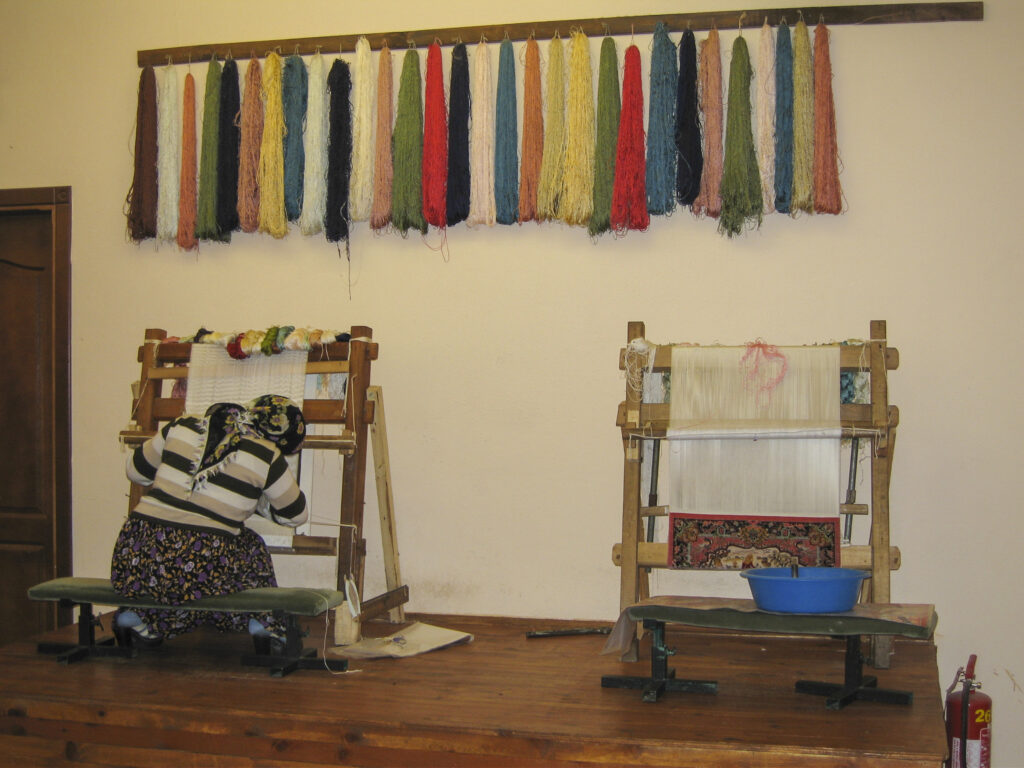
The Dogus Hali Carpet Factory produces rugs made from silk as well as wool. The process of making silk thread is, as is well-known, arcane, complex and labor-intensive. Silk originated in China, where the secrets of its manufacture were carefully guarded for many years and export of silkworms was punishable by death. Silk was introduced to the Roman Empire around the first century BCE, where it quickly became a prized luxury under heavy demand; this gave rise to the famous Silk Road of central Asia, over which silk was traded and transported for over a thousand years. Even after silkworms were smuggled out of China, enabling the Byzantines to begin sericulture by the sixth century CE, Chinese silk remained dominant in the luxury market until the era of the Crusades.
The Ottomans eventually conquered the Byzantine Empire and took over the silk industry in Anatolia. The production of silk begins, of course, with the cultivation of silkworms, who are fed on leaves from the mulberry tree. Silkworms are the larval stage of a moth, so like all insects the larvae become pupae, and it is their cocoons from which silk thread is extracted. The cocoons are shipped to the Dogus Hali carpet factory from the farm for storage while awaiting the next step of production.
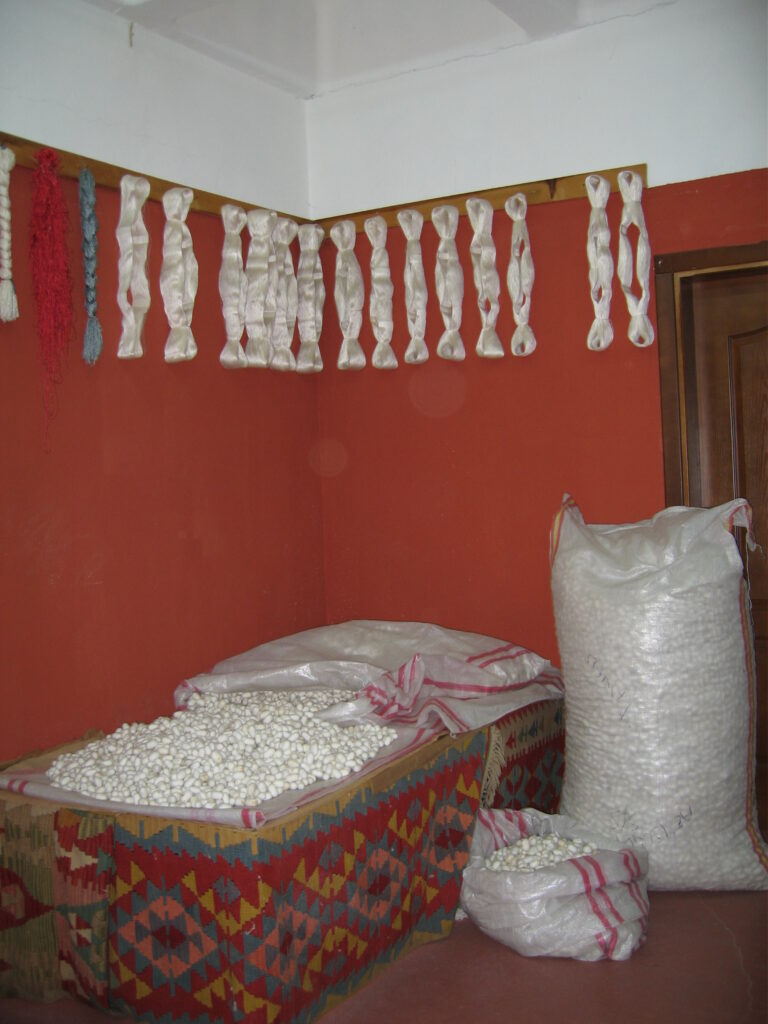
The next step is to soak the cocoons in boiling water, which causes them to dissolve.
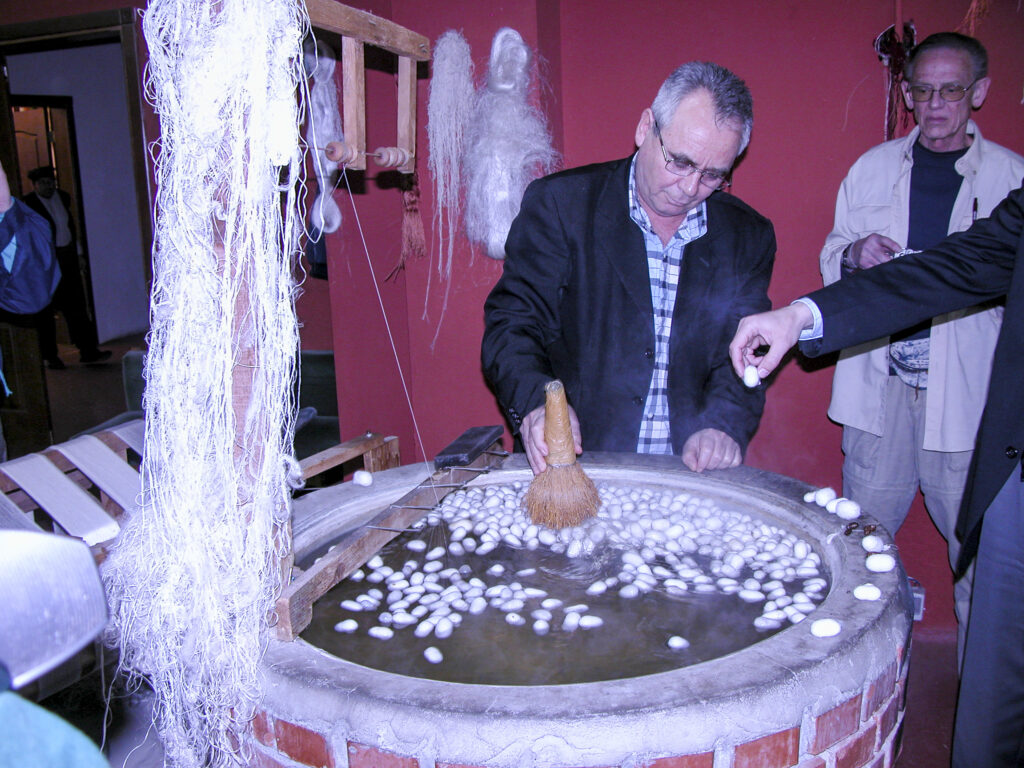
The Dogus Hali silk maestro demonstrated the skill of extracting the silk from the dissolving cocoons.
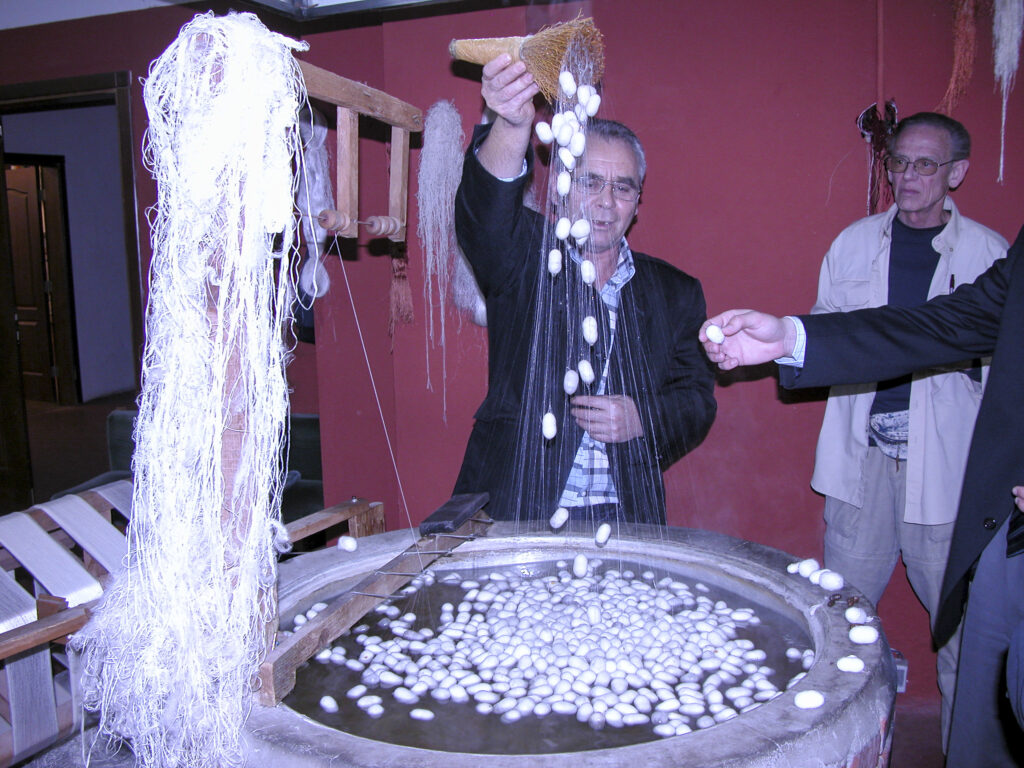
The tiny strands from the dissolving cocoons are then gathered up and spun into threads suitable for weaving.
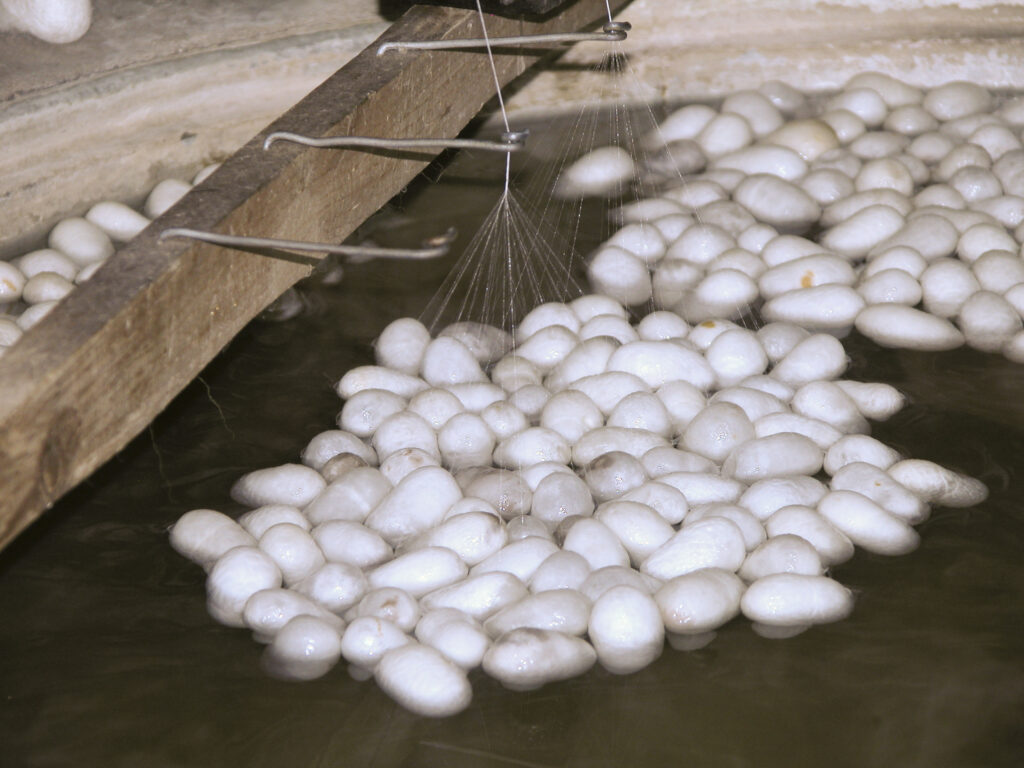
Regardless of the type of thread used, the next step in the carpet-making process is to dye the thread, so were taken to the room where the dyes are made in large vats.
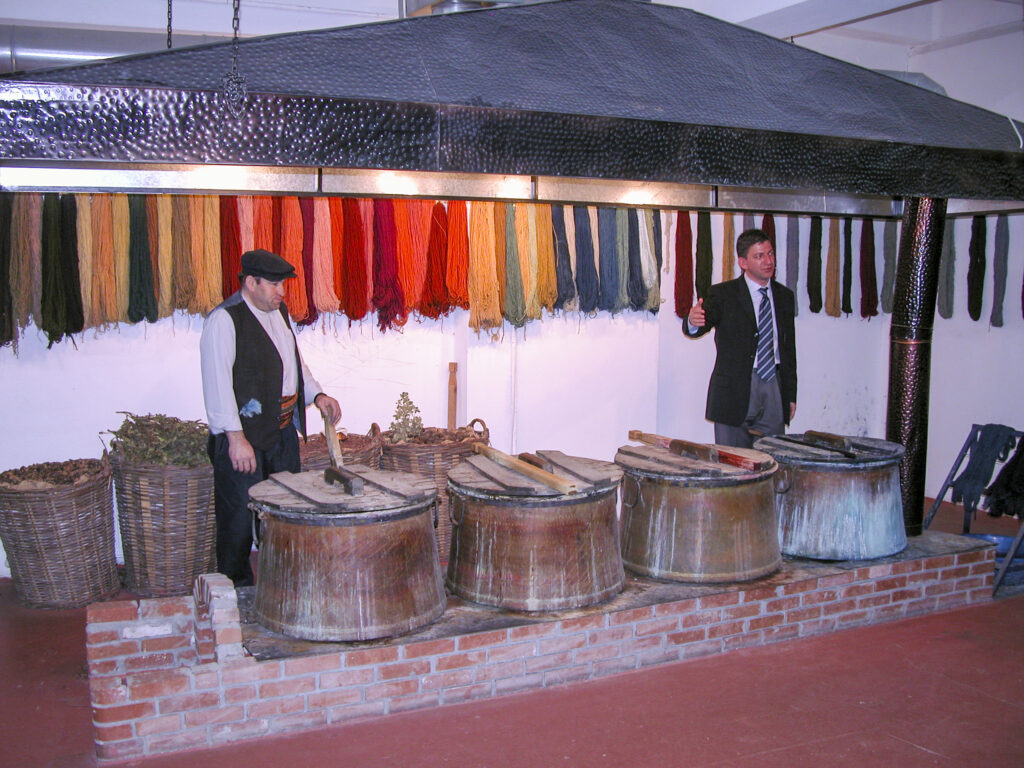
The dyes are produced by boiling parts of various plants, which were stored in baskets next to the vats.
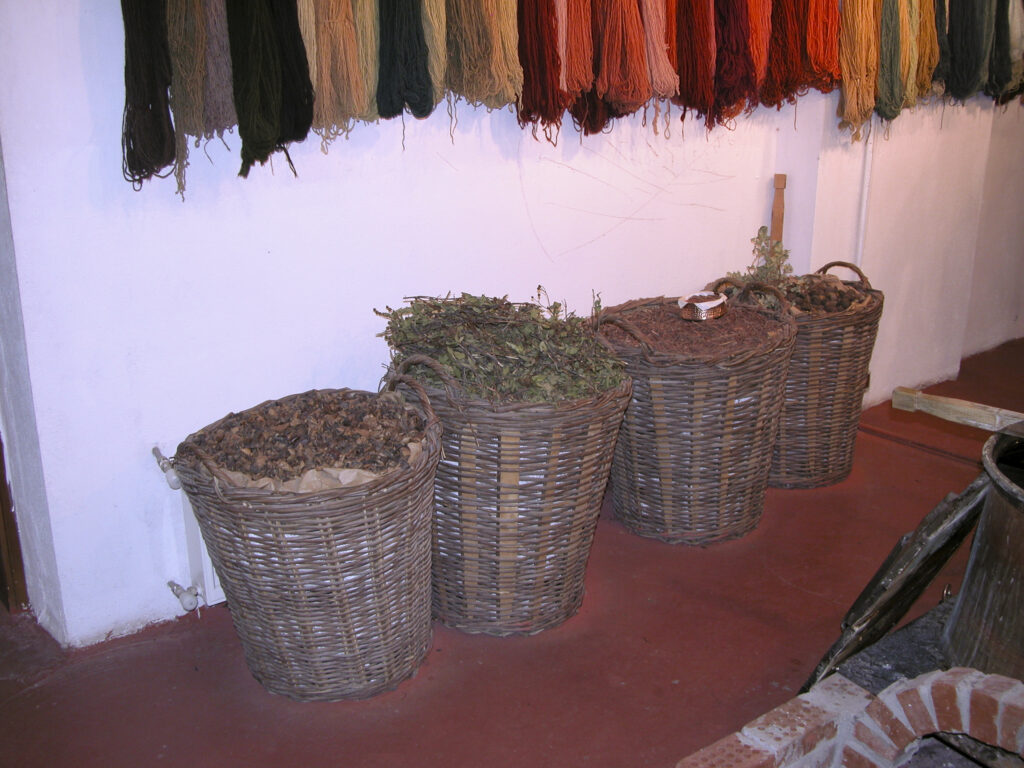
The threads are dipped in the vats, soaked and then hung out to dry.
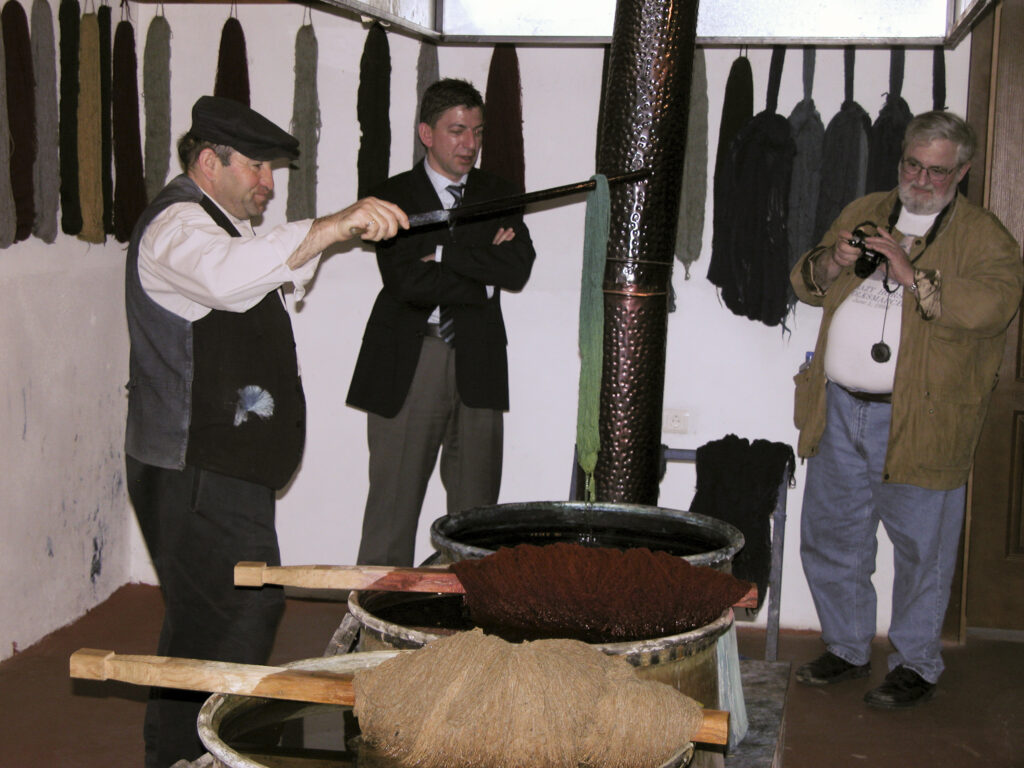
Having completed our introduction to the carpet-making process, we were led through halls and lobbies lined with the fruits of the establishment’s looms.
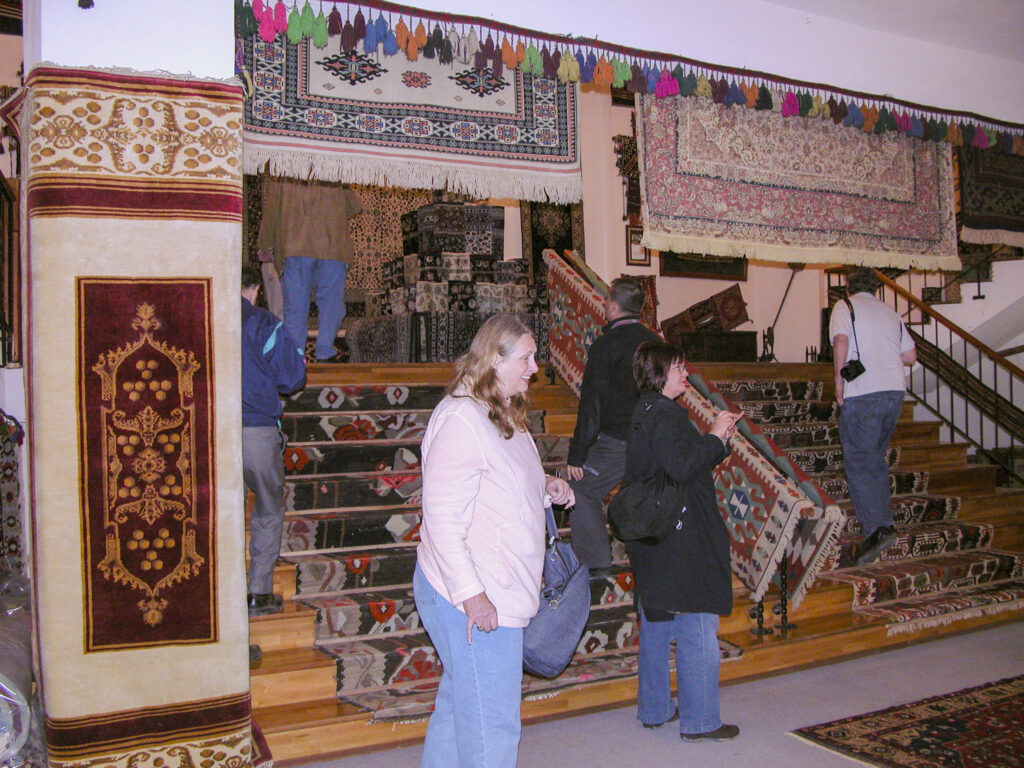
Every stairway was covered with carpets, all the floors were overlain with rugs, every wall was covered with sumptuous hanging rugs, and carpets were even hung from the ceilings.
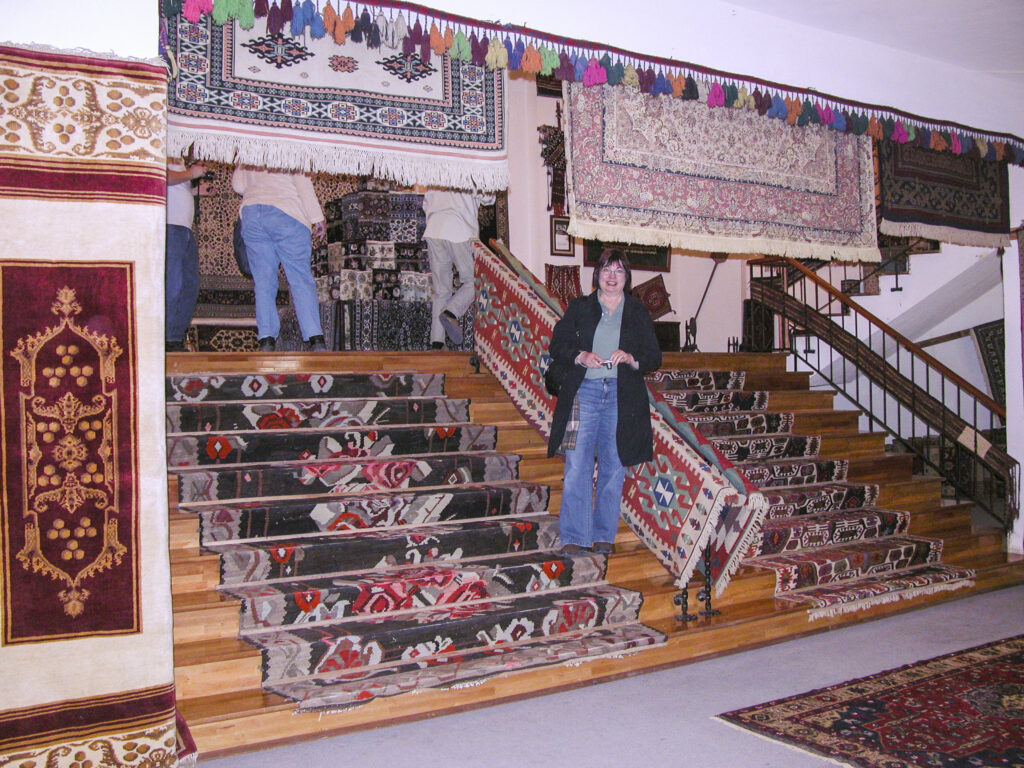
Carpets and rugs were piled on top of one another and shaped into elaborate structures.
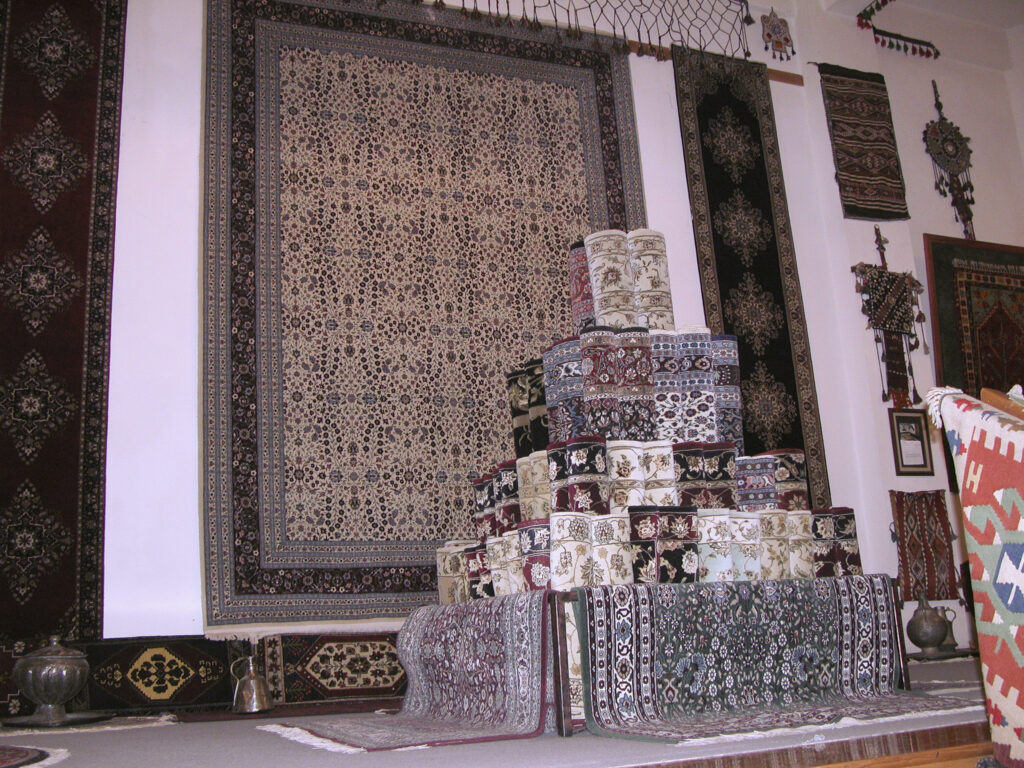
There was even a yurt crafted out of rugs, and one could imagine that someone like Genghis Khan or Tamerlane might have camped in something like this while out on the Central Asian steppe while making their conquests.
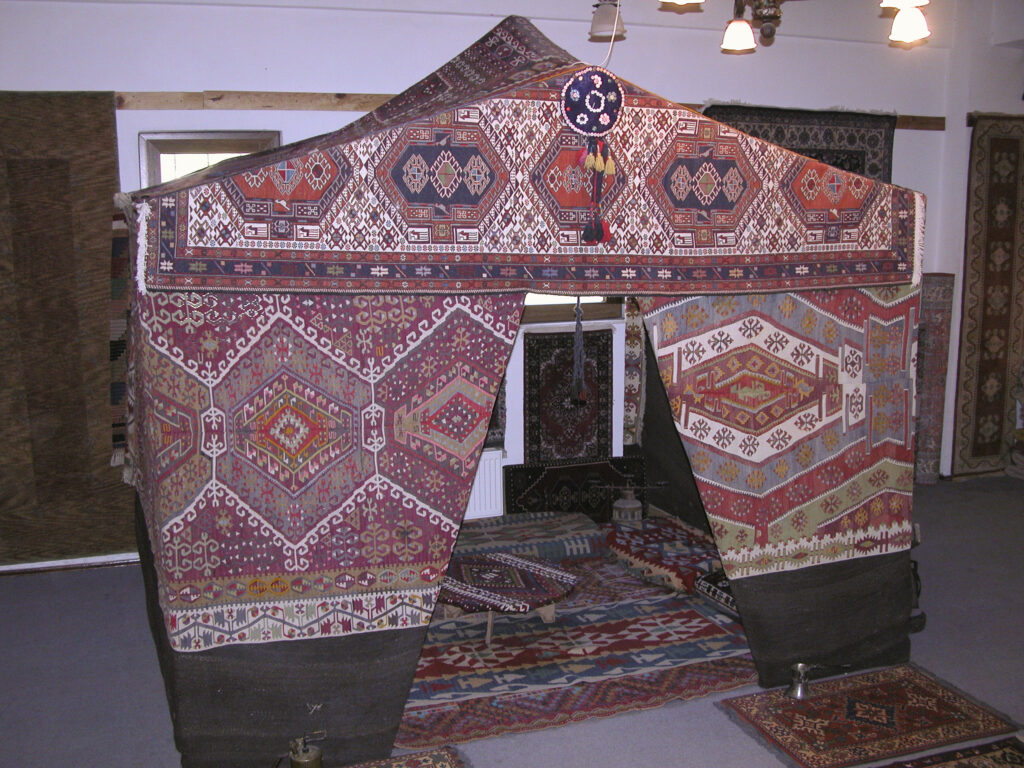
There was no question but that the purpose of all this opulent and well-planned display was to sell rugs, and that the tour would culminate in a high-pressure sales pitch, but I didn’t mind because it was tastefully done and not overly crass.
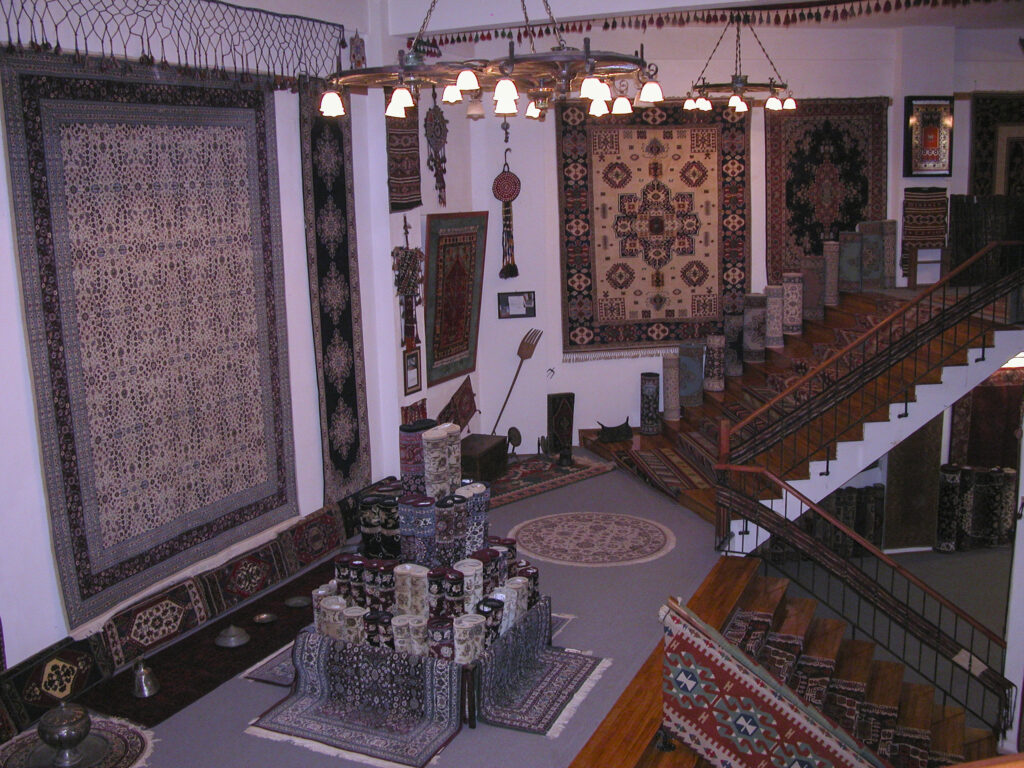
The entire Dogus Hali establishment was reminiscent of a palace out of the Arabian Nights, er, well, Turkish Nights. One could imagine that Sultan Suleiman the Magnificent would have lived in such a place. (Eventually we got to Istanbul and saw the Topkapi Palace, where he did live.)
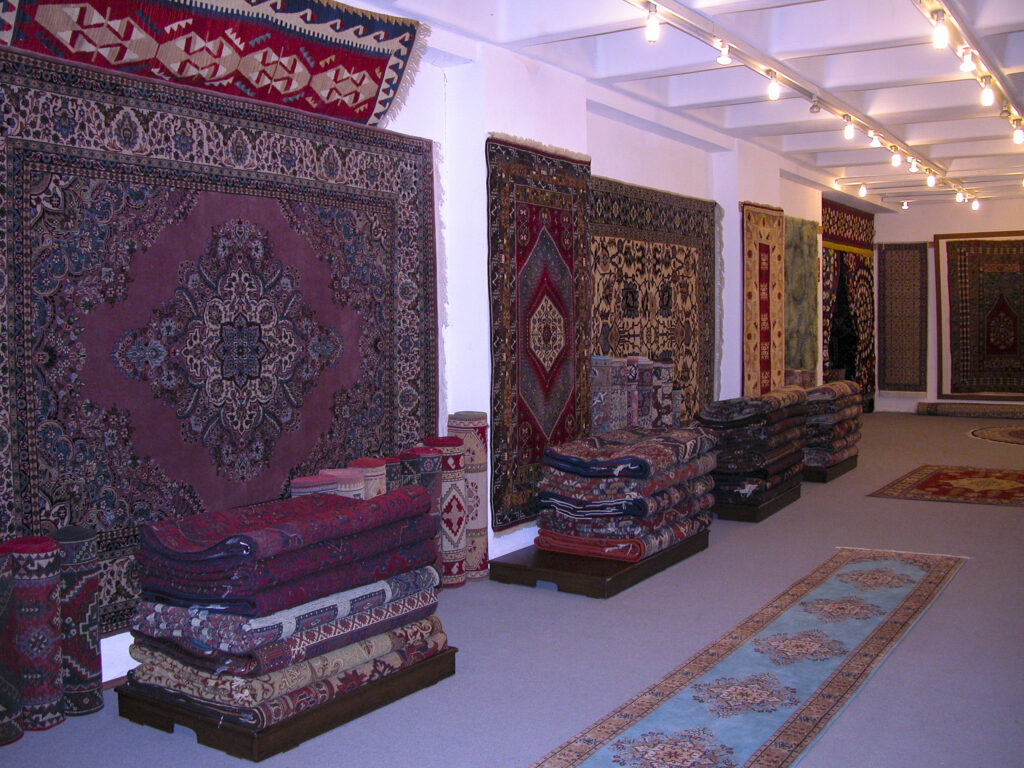
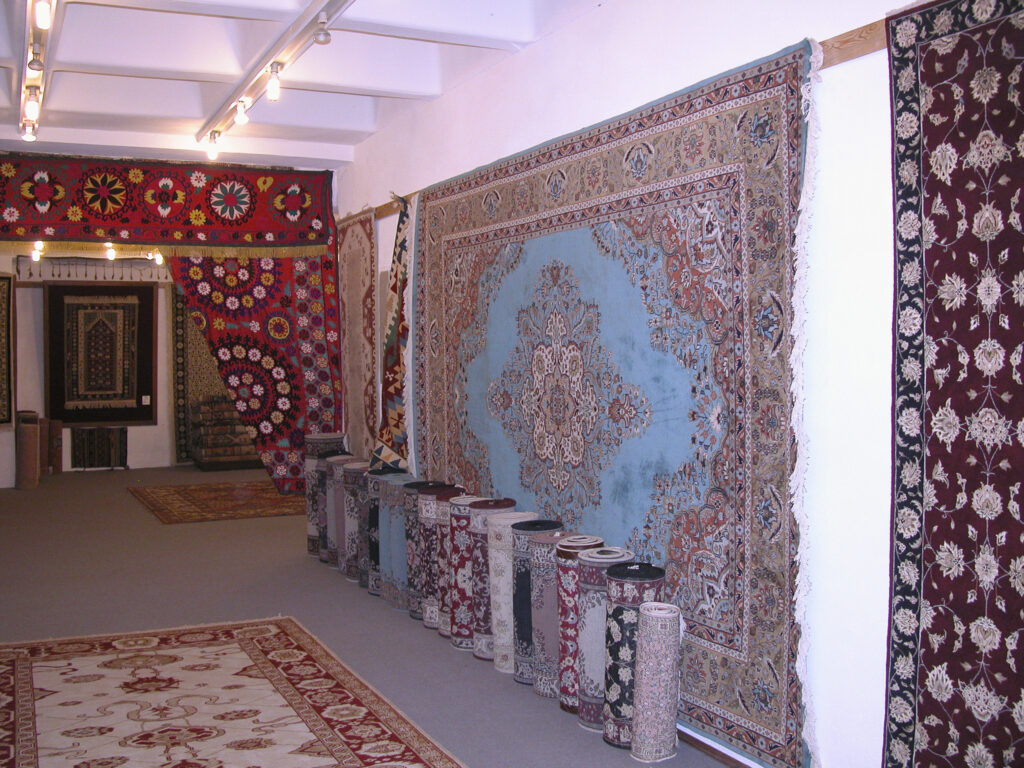
After wending our way through what seemed like miles of hallways filled with merchandise, we finally arrived at the showroom. We were seated in a cozy little corner and served tea, and then the hustle began.
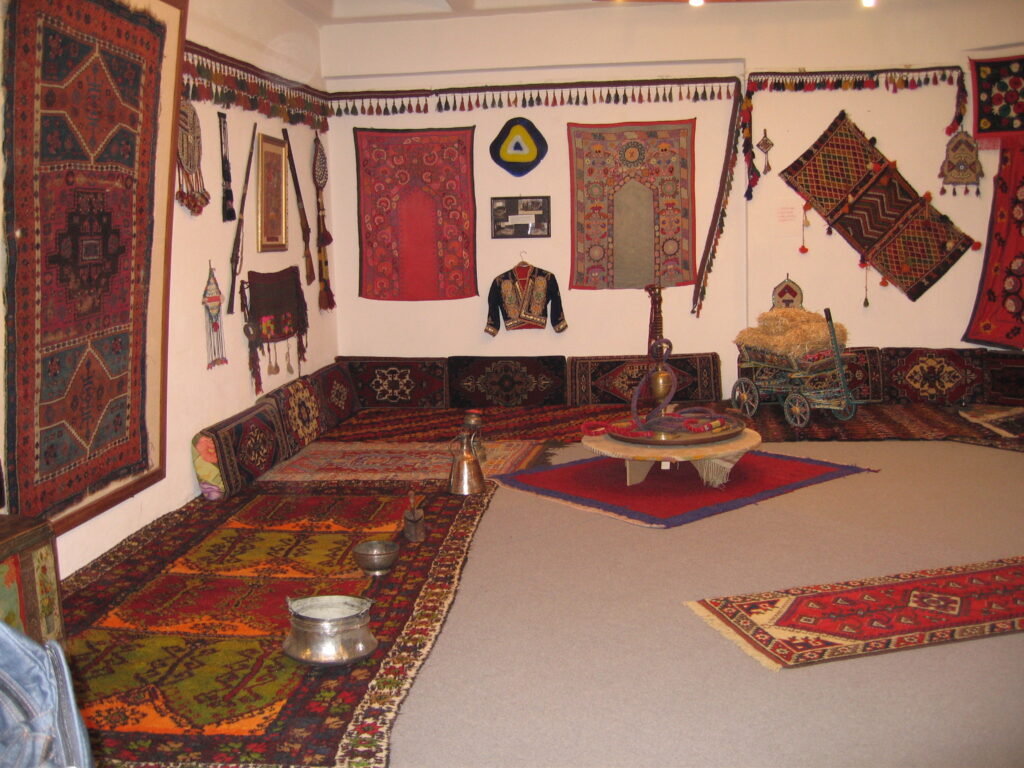
The table where we were seated had a large hookah. I looked for a caterpillar to be smoking it, but apparently our hosts hadn’t read Alice in Wonderland.
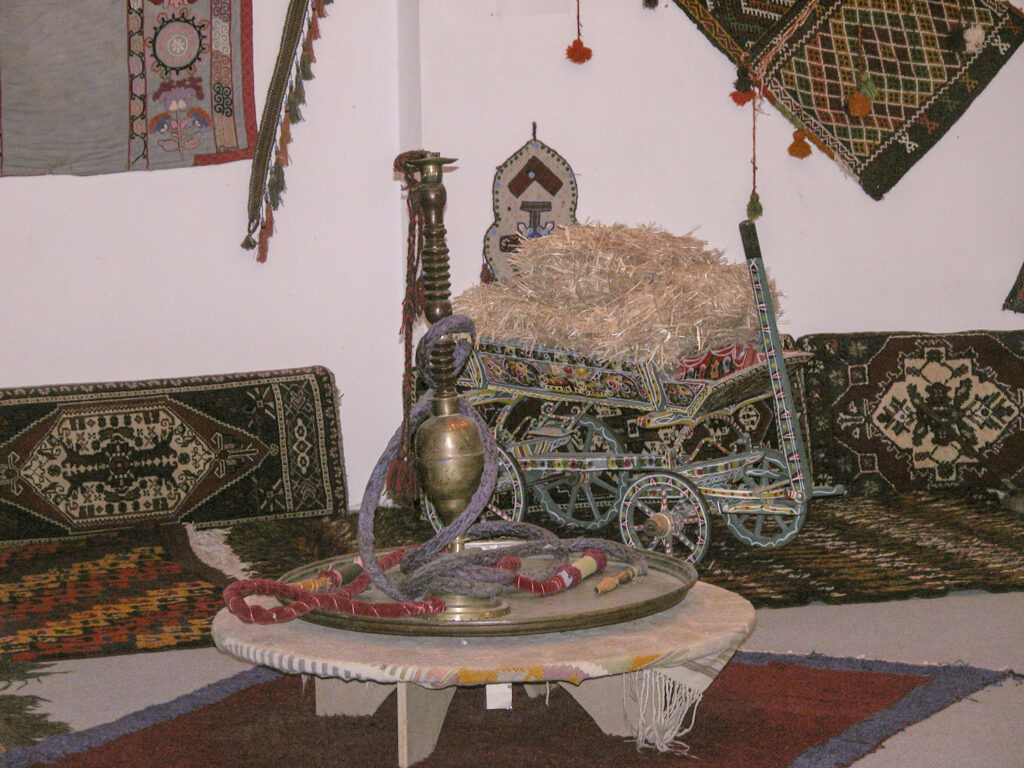
Our hosts served tea from an incredibly looking antique pot, which must have cost a fortune, but it wasn’t among the merchandise offered for sale – not that any of us could have afforded it in the first place.
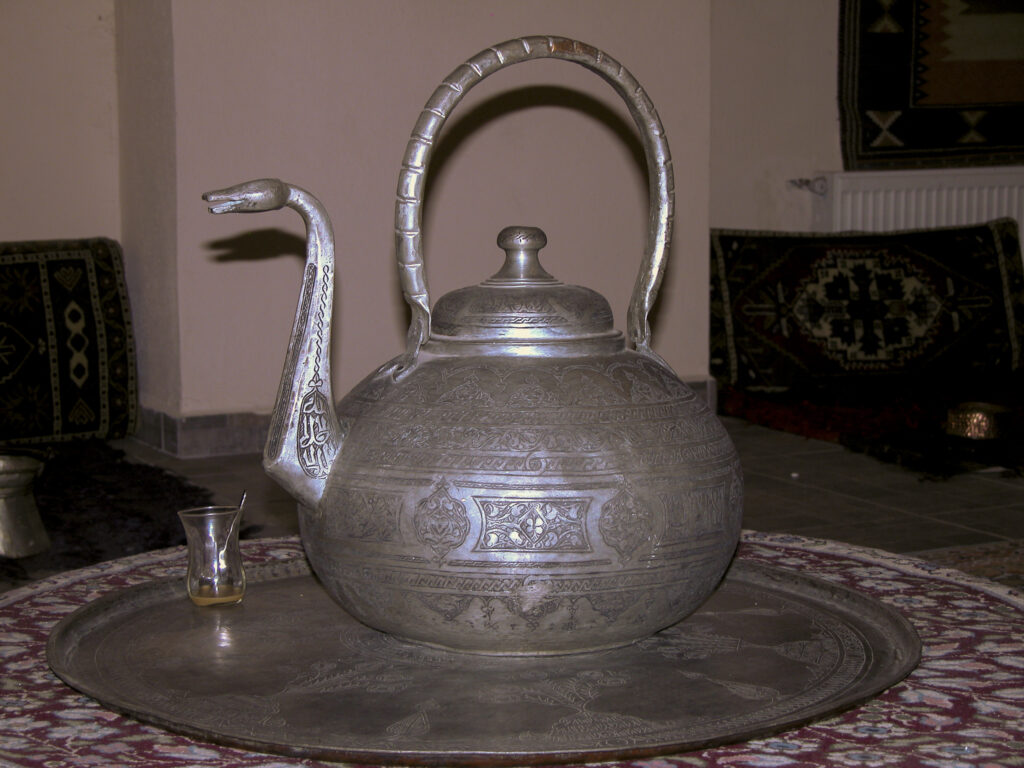
The sales manager took the floor and began serving up a series of astoundingly elegant rugs, each of them more beautiful than the last, and most of them far beyond our means.
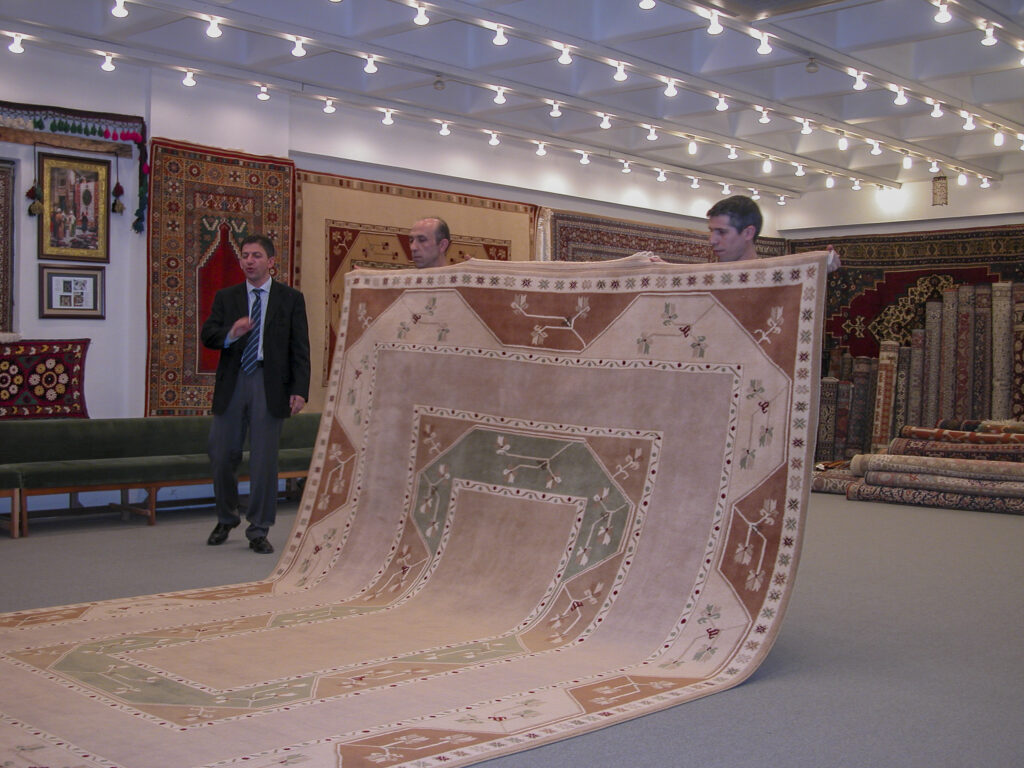
They were all gorgeous, but some seemed to leap up and grab one’s attention more than the others.

I never cease to be amazed at how such intricate designs can be incorporated in a rug that consists of thousands of threads strung on a loom.
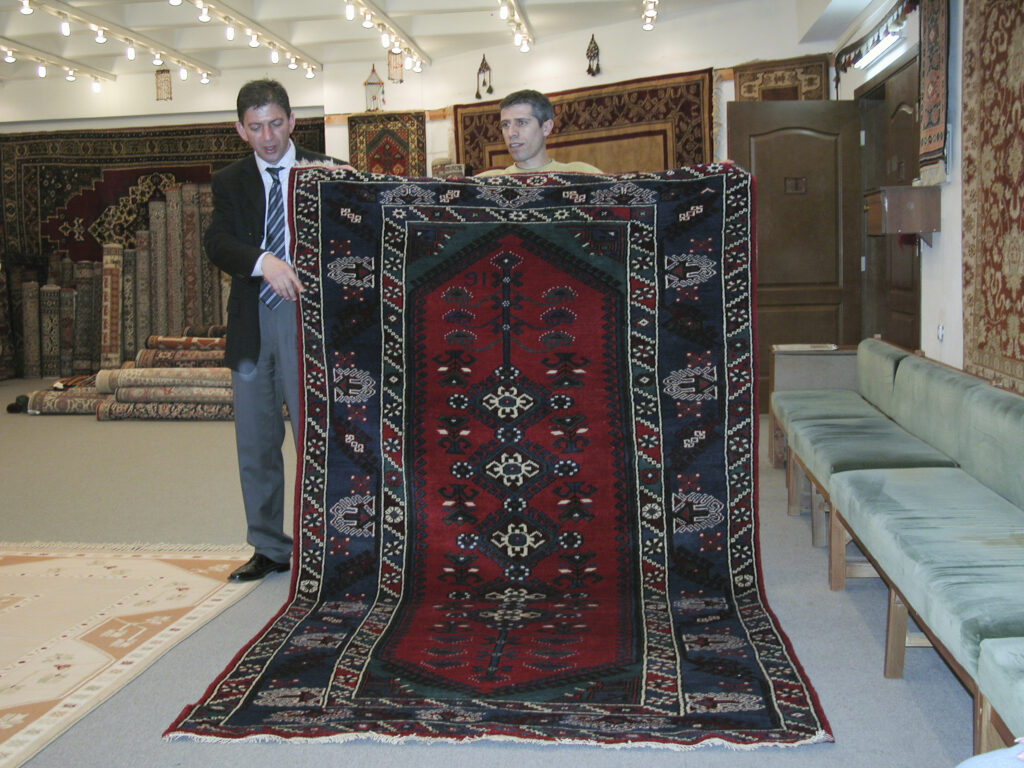
Most of the room-sized carpets cost thousands of dollars. As for the silk rugs, even a small one cost $5K, and I think only one person (Pat Bush) bought one of those.
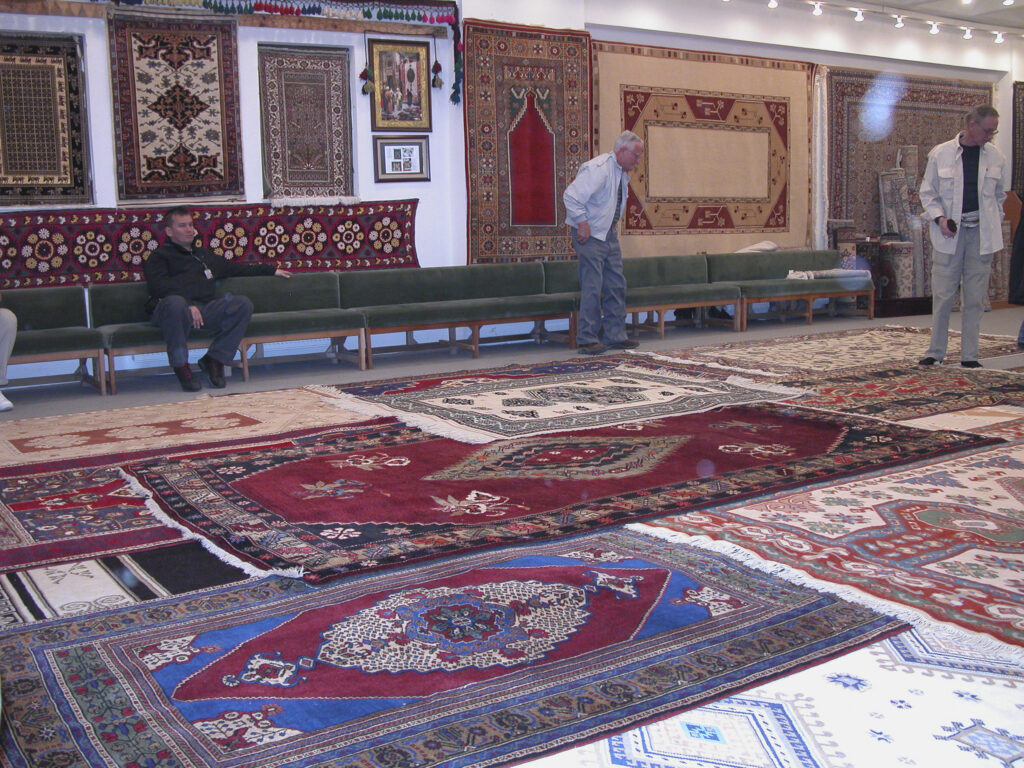
The big worry for us was that even if we could find one that we could afford, we didn’t dare put it on the floor of our house, because our pets (at that time we had a dog and a cat) would inevitably destroy it. We solved that problem by limiting our scope to the small rugs, which were all we could afford anyway, and picking one that we thought would fit on our wall.
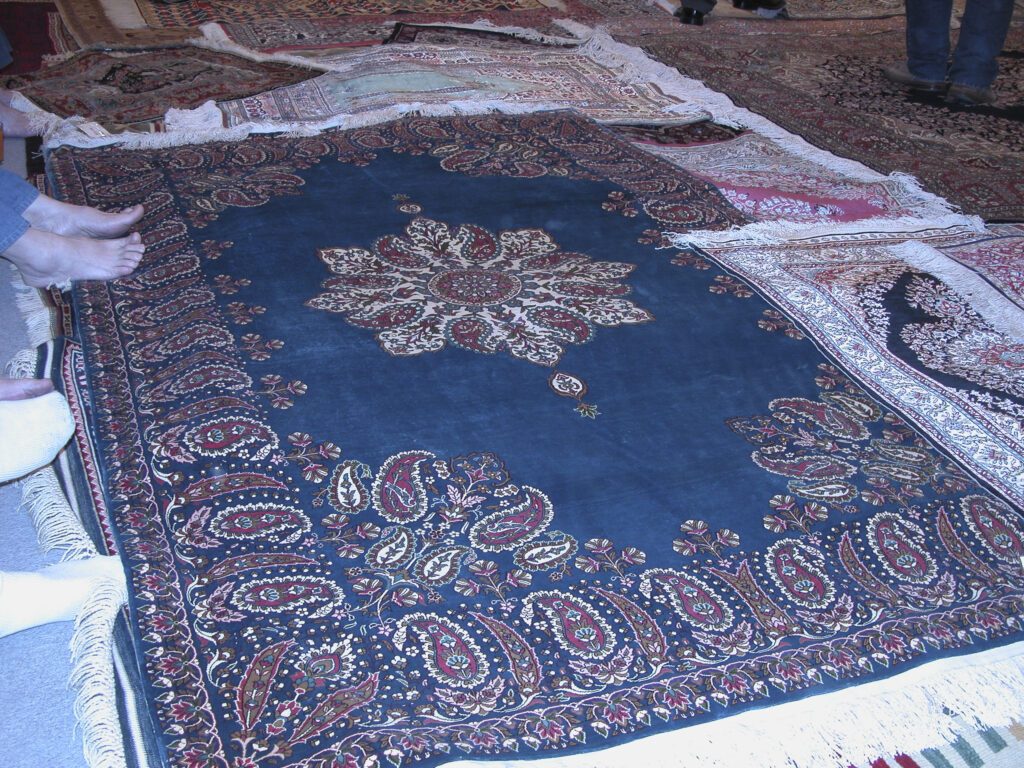
Eventually Sandie and I settled on one that was small enough to be affordable (for us) and to fit in with our decor.
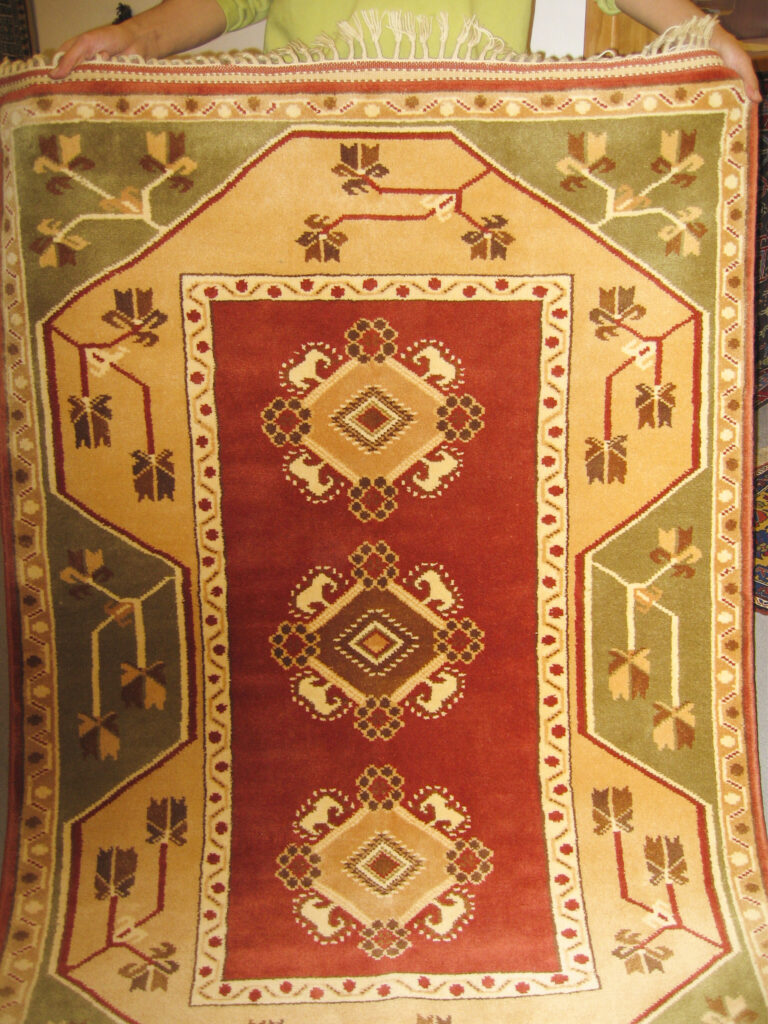
Our new rug was packaged up and shipped off to our home, where it eventually arrived after our return. Unfortunately, it turned out that we had miscalculated, and it didn’t fit on our wall.
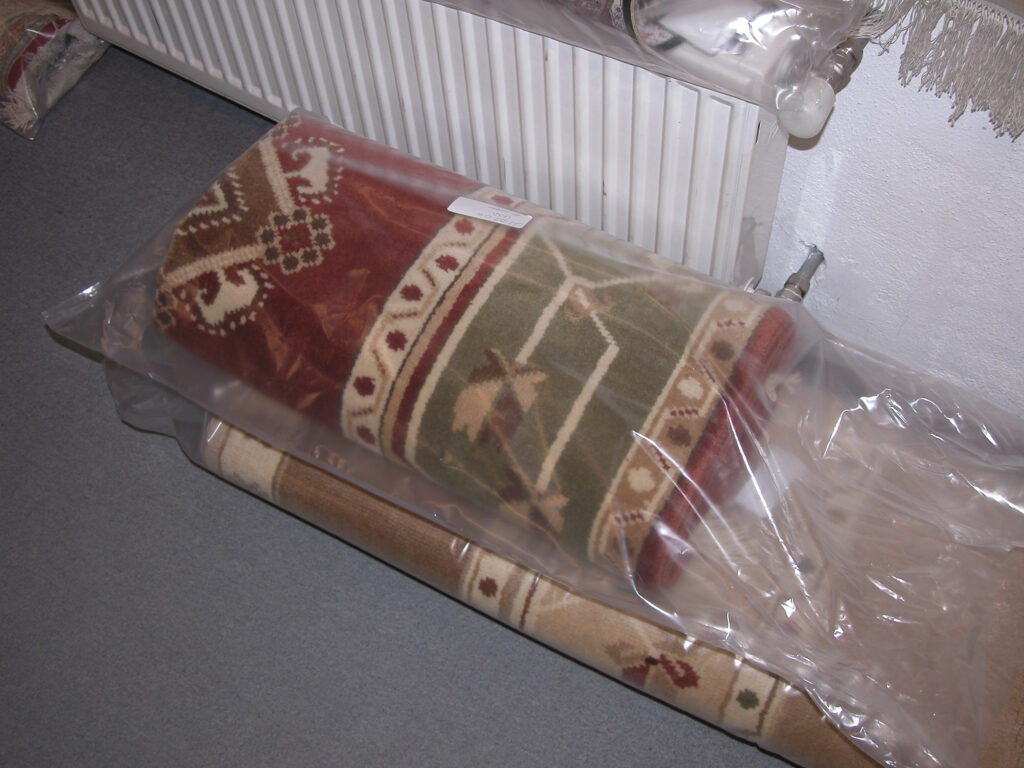
Years later we moved to Hemet; by that time we had only one dog, Jock the Miniature Schnauzer, who was very well-behaved and could be trusted not to pee on the rug. So now it’s on the floor of the living room.
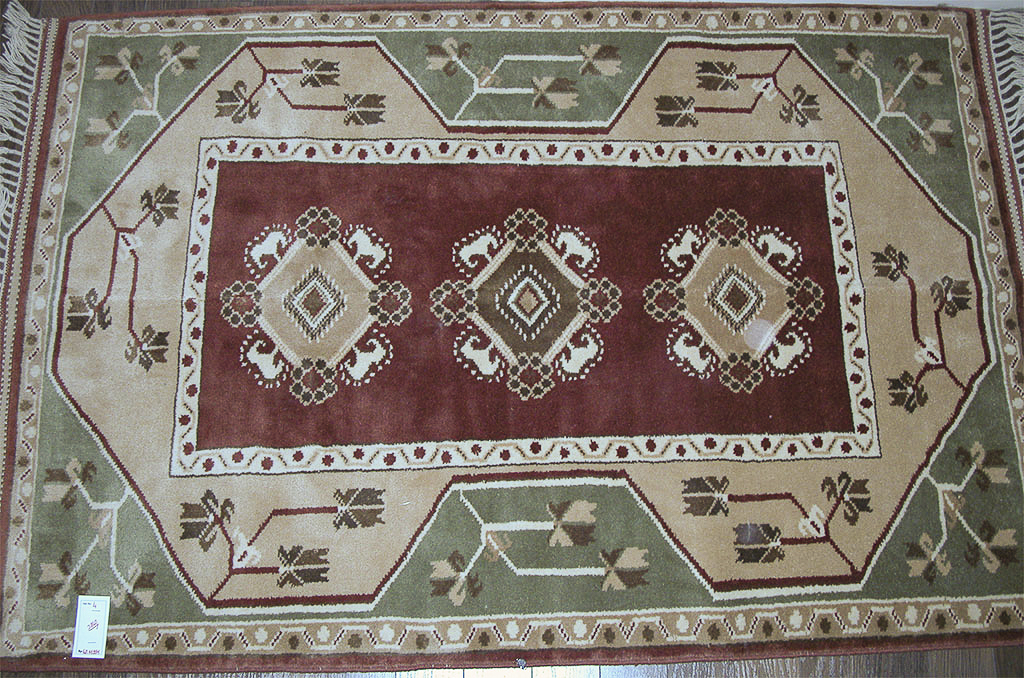
Having seen our purchases wrapped for shipping, we said farewell to the Dogus Hali Carpet Factory and set forth on the next leg of the trip, from Denizli down the E87 highway to Antalya.
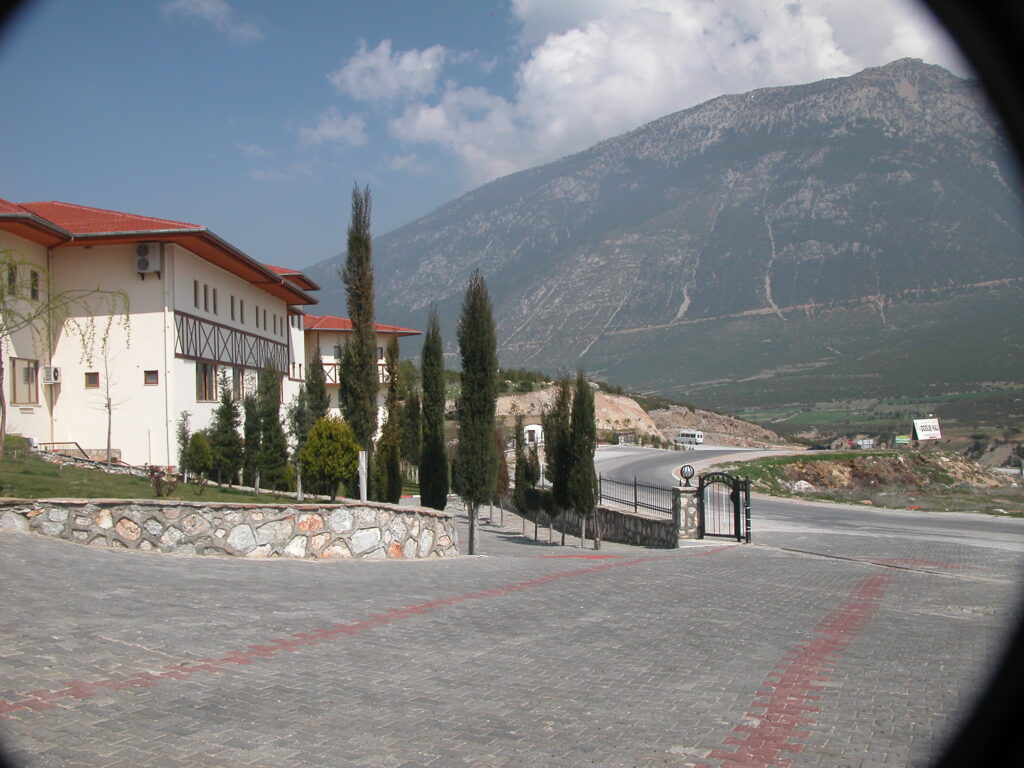
The road to Antalya lay through the Taurus Mountains, and we didn’t have to go far to find ourselves in them. They were right outside the factory’s doors.
